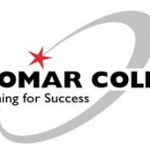- Industria: Education
- Number of terms: 12355
- Number of blossaries: 0
- Company Profile:
Founded in 1946, Palomar College is a public two-year community college in the city of San Marcos, located in north San Diego County, California. Palomar offers over 300 associate degree, certificate programs and is designated by the U.S. Department of Education as an Hispanic-Serving Institution ...
Un trait génétique contrôlé par plus d'un allèle, chacun ayant une fréquence de 1 % ou plu dans le pool génétique de la population. Consultez polymorphisme équilibré.
Industry:Anthropology
Une grosse molécule organique qui stocke le code génétique pour la synthèse des protéines. Chaque chromosome se compose principalement d'une molécule d'ADN. L'ADN est composé de sucres, phosphates et bases disposées en une double hélice en forme de structure moléculaire. Segments d'ADN correspondent à des gènes spécifiques.
Industry:Anthropology
A pattern of evolution in which different parts of the body evolve at different rates. In the case of humans, we essentially attained our modern form below the neck by at least 2 million years ago. However, our cranial capacity did not reach its current size until after 100,000 years ago.
Industry:Anthropology
A gene that can initiate or block the functions of other genes. Regulator genes control the timing of production of a variety of chemicals in humans and other organisms. Shortly after conception, regulator genes work as master switches orchestrating the timely development of our body parts. They are also responsible for changes that occur in our bodies as we grow older. Regulator genes are also called homeotic genes.
Industry:Anthropology
A mutation that occurs as an error in a codon of a DNA or RNA molecule.
Industry:Anthropology
A bone disorder in which there is a progressive reduction in bone density resulting in brittleness and increased porosity. People with osteoporosis are at a high risk for bone fractures. This disorder is most commonly found among post-menopausal women. However, it also occurs at a high frequency among men who have low testosterone levels (e. G. , men with Klinefelter syndrome).
Industry:Anthropology
A radiometric dating technique based on the rate at which uranium-238 and thorium-230 fission. This method has been used to date organic marine sediments, bone, wood, coral, stone, and soil from deep water, cave, or land fall areas. The time range that has been dated with this method so far is less than 300,000 to about 1,000,000 years ago. The half-life of U-238 is 4. 468 billion years and the half-life of Th-230 is 75,380 years. This is one of several uranium series dating methods.
Industry:Anthropology
The movement of heat from one object to another by direct contact. Example: the transmission of heat from your body to the chair on which you are sitting. See convection and radiation.
Industry:Anthropology
A genetically inherited progressive disease of the central nervous system. MS occurs as a consequence of one's own immune system attacking the insulating sheath that normally protects neurons. Symptoms range from numbness and tingling to paralysis. There is a loss of motor and cognitive functions. The gene(s) responsible for MS are incompletely penetrant in that the onset of the disease is apparently triggered by a virus and possibly other environmental factors. There is a correlation between the amount of sunlight that children are exposed to and the likelihood that they will develop MS later in life. People who spend much of their first 16 years in tropical and subtropical regions of the world are much less likely to develop this disease than those who live in far northern and far southern regions of our planet. It is believed that the lack of abundant sun exposure early in life is somehow responsible for the later onset of MS.
Industry:Anthropology
A radiometric dating method based on the fact that the amount of carbon-14 steadily decreases in all organisms after death. The reduction in the frequency of this isotope in a sample occurs at a half-life of 5730 ± 40 years. This technique is used to provide chronometric dates for organic materials such as bone, shell, wood, and charcoal.
Industry:Anthropology
